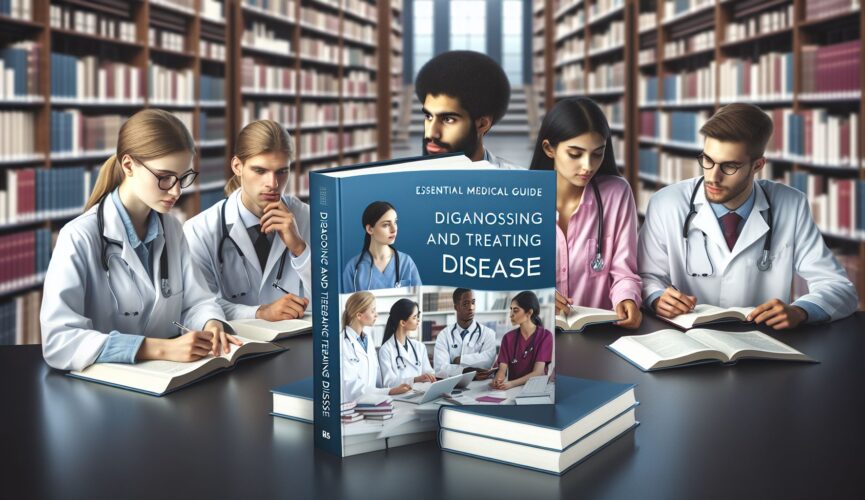As future physicians, it is our responsibility to possess the skills and knowledge necessary to diagnose and treat diseases with utmost precision and empathy. This intricate task requires a systematic approach combined with the use of advanced medical technologies. In this blog post, we will delve into the fundamental principles of diagnosing and treating diseases, providing invaluable guidance to students of medicine.
Understanding the Diagnostic Process
Diagnosing a disease is often compared to solving a complex puzzle. It requires meticulous observation, astute interpretation of symptoms, and the consideration of numerous factors. Patient history plays a crucial role in uncovering potential underlying causes for their condition. For instance, a detailed dialogue with the patient provides valuable insights that can guide further investigations.
Once the initial assessment is complete, a physical examination should be conducted. Here, technology can aid in a comprehensive evaluation. Utilizing tools such as stethoscopes, blood pressure cuffs, and ophthalmoscopes enables us to gather essential data regarding the patient’s condition. In addition to aiding diagnosis, these technologies play a vital role in establishing a bond of trust between patients and physicians through their mere usage.
Investigating Further: Laboratory Tests and Imaging
Laboratory tests serve as an indispensable tool for medical diagnosis. Blood tests, for example, provide valuable information about a patient’s overall health, specific organ function, as well as the presence of certain diseases. Other bodily fluids, including urine and cerebrospinal fluid, can also be analyzed to gain further insight into a patient’s condition. It is essential to interpret these results in conjunction with the patient’s medical history for an accurate diagnosis.
Imaging techniques encompass a range of technologies such as X-rays, ultrasounds, CT scans, and MRIs. These non-invasive methods allow us to visualize specific areas of the body, helping to identify abnormalities, tumors, or structural damage. By integrating these technologies into our diagnostic approach, we can accurately identify the root cause of a patient’s condition and choose the most appropriate treatment modalities.
Selecting Optimal Treatment Modalities
Once the diagnosis has been established, the next critical step is devising an effective treatment plan. The approach may vary depending on the disease, the patient’s medical history, and their preferences. It is essential to frame this decision within a multidisciplinary framework, involving inputs from experts across various medical fields to attain the best outcome possible.
Pharmacological intervention is often the cornerstone of treatment. Medications can alleviate symptoms, control disease progression, and provide curative benefits in several cases. However, it is important to consider potential side effects and tailor the treatment plan to suit the individual patient.
In certain situations, surgical intervention may be necessary. Surgical treatments can correct anatomical abnormalities, remove tumors, or repair damaged organs or tissues. This requires a high level of technical skills and expertise, along with the implementation of modern surgical technologies to ensure a successful outcome.
The Power of Compassion and Continuity of Care
While medical technologies play an indispensable role in diagnosis and treatment, we must not overlook the importance of empathy and compassion. Treating a patient’s physical ailment is only one aspect of medical care. Patients also require emotional support and reassurance throughout their journey towards wellness.
Building rapport with patients and showing genuine concern for their well-being can significantly impact their overall healing process. It is vital to listen attentively, address their concerns, and communicate treatment options clearly. Establishing a sense of trust and continuity of care are paramount, as they foster patient compliance and improve overall outcomes.
In Conclusion
Diagnosing and treating diseases demands a holistic approach, combining cutting-edge medical technologies with the empathetic care patients deserve. Through careful observation, interpretation of symptoms, and the use of advanced diagnostic tools, we can successfully decipher intricate medical puzzles. Furthermore, tailoring our treatment plans to address each patient’s unique needs and employing the power of compassion during their treatment journey is crucial. By mastering these skills, medical students will be well-prepared to deliver comprehensive care in their future medical practice, ensuring the well-being of countless individuals.
